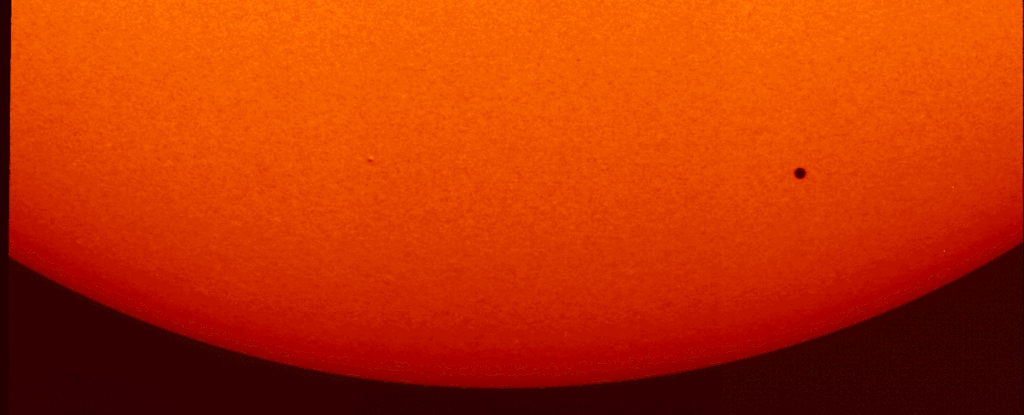A spacecraft studying the wild ways of our magnificent Sun has captured an event rarely seen from our position here on Earth's surface.
On 3 January 2023, the European Space Agency-led Solar Orbiter observed the innermost planet of the Solar System slide across the disk of the Sun; a small black dot against a background of raging flame.
This type of event is known as a transit, and it occurs when a smaller body, such as a planet or moon, crosses in front of a star, blocking out a small amount of its light. Though the orbiting object is often reduced to a mere shadow, transit events can teach us all sorts of interesting things.
If you've heard the term recently, it's probably because it's a primary tool in the kit for finding planets outside the Solar System, or exoplanets.
Space telescopes like Kepler and TESS stare at stars for long periods of time, looking for faint, regular dips in starlight that are the signature of a transiting exoplanet.
Not only does this subtle flicker of a shadow reveal the orbiting body's presence, but it can also potentially provide a hint about its makeup. When an exoplanet – or even a closer planet like Mercury, or a moon, for that matter – passes in front of its parent star, some of the star's light will filter through any atmosphere it might be harboring. Analysis of the ways that light differs from the naked starlight can allow scientists to determine the gas's composition.
Scientists have used this technique to study the atmosphere of Venus here at home, but also a growing number of exoplanet atmospheres, too.
Mercury's atmosphere has also been studied using transit data, but Solar Orbiter used the rare event to do something different: calibrate its instrumentation.
"It is a certified black object traveling through your field of view," explains ESA astronomer Daniel Müller.
Silhouetted against the disk of the Sun, Mercury should be a completely dark blob. Therefore, any light seen on the planet is likely to be produced by the telescope. This effect is known as the point spread function, and understanding how it happens and how strong it is helps astronomers remove it from Solar Orbiter's science data.
In turn, this means that the analysis performed will be more accurate.
Mercury, the closest world to the Sun, is one of the Solar System's less-studied planets, but it's not without its secrets. We don't know how or where it formed, why its core seems to be so huge, or whether it has internal geological activity, or why it has a global magnetic field when Venus and Mars do not.
Transit data won't give us answers to these questions – there's a separate space probe mission currently active to do just that – but it does beautifully remind us that even the smallest planets can give big answers.
